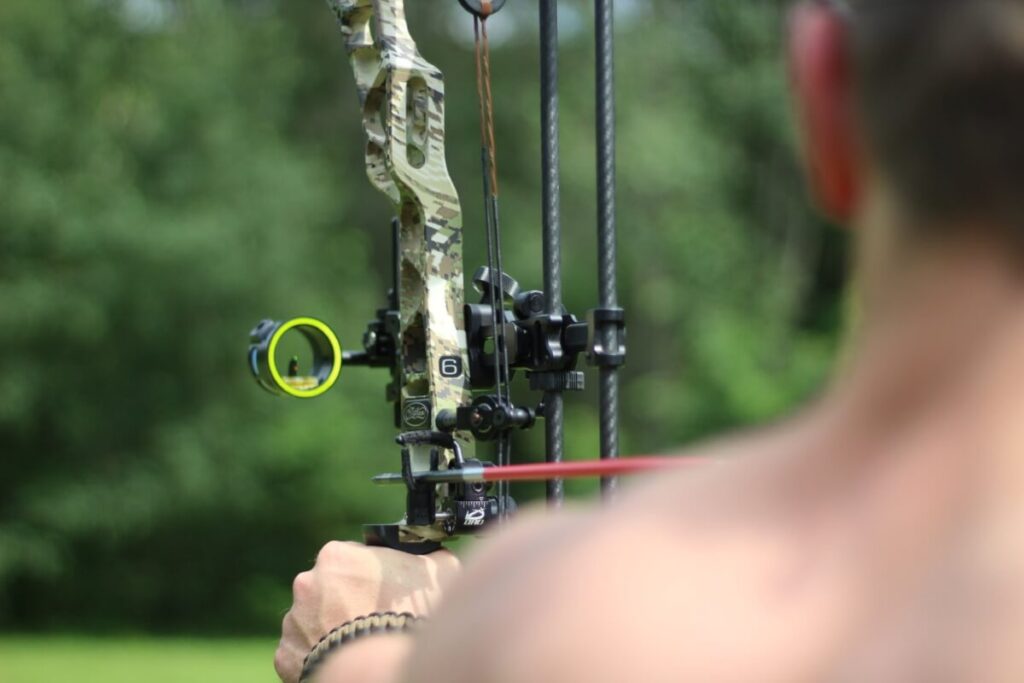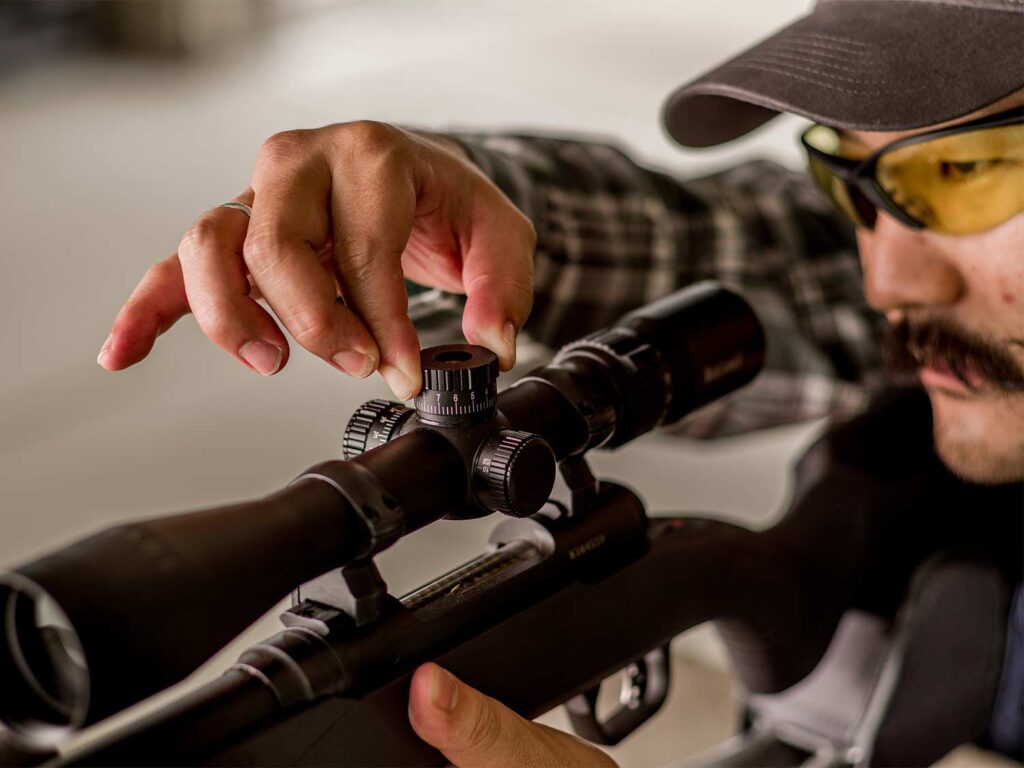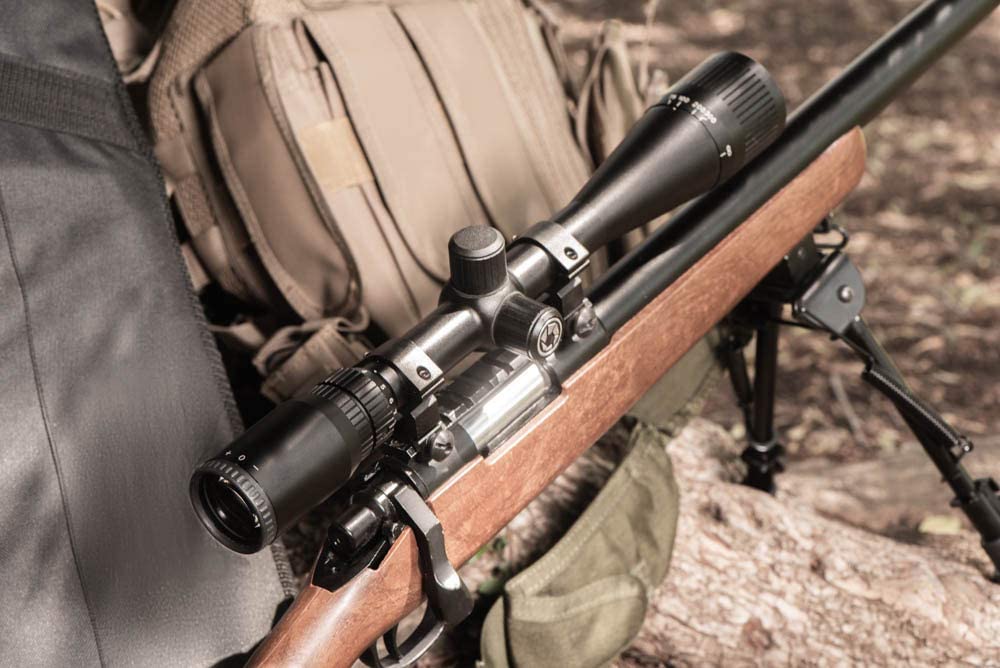

Learning to aim a gun at the target is essential for anyone who owns it, either for hunting or range shooting. Iron sight is a built-in device that is used to assist you in aligning with specific targets. It can be used in firearms, crossbows, or telescopes. In this article, we will delve into the details of how to aim with an iron sight. It’s going to be a beautiful read, so get a seat, grab your coffee and continue.
Typical
iron sights
Trusted Source
Iron sights - Wikipedia
Iron sights are a system of shaped alignment markers (usually metal) used as a sighting device to assist in the aiming of a device such as a firearm, crossbow, or telescope, and exclude the use of optics as in reflector (reflex) sights, holographic sights, and telescopic sights.
en.wikipedia.org
are composed of two components: the rear sight — close to the observer and installed vertically on the line of sight; the front sight — close to the observation target, which is cylindrical, bead, or ring. As we would discuss in detail later, there are two types of iron sites – open sight and the aperture (target) site. The rear part of the open sight has a groove, and the target sight comes with a small round hole. Civilian, hunting and police firearms usually use open sights; most military combat rifles use aperture devices. The earliest mechanical sights were fixed and difficult to adjust; now, most mechanical models are designed to be adjustable, and they can be used for wind deviation and ballistic correction.
As previously mentioned, there are two basic types of iron sights – open sight and aperture sight; we will now explain these types in details;
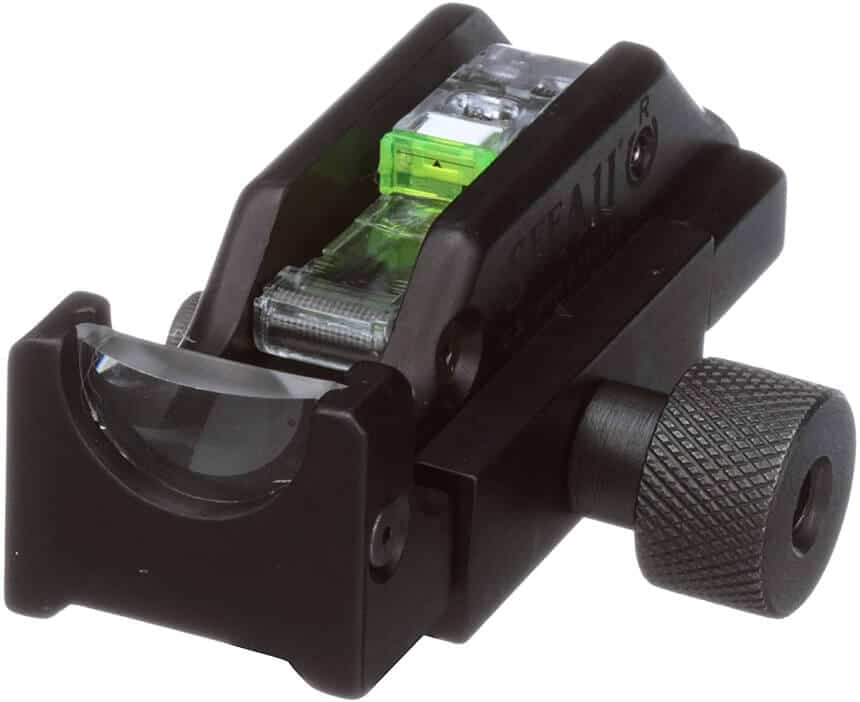
You need to cut the columnar front sight and the top of the rear sight evenly in the high and low direction or move the ball sight to the bottom of the V-shaped or U-shaped model. When aiming at the target, if the front part is not in the middle of the sight, the shooting direction will shift; if it is higher than the sight, the hit point will be higher than the target; conversely, when the front part is lower than the rear sight, the hit point will be lower than the target. Types of open sights include Patridge sight, antlers, semi-antlers, and quick sights.
The open rear sight has many advantages: common, easy to make, simple to use, light and durable, and does not require batteries. It also has many disadvantages, it is not too accurate, and it is difficult (or impossible) to adjust. It takes more time to aim (the antlers are particularly slow, the U and V are slightly faster, and the fastest is Quick sight). The open model will also obscure the lower half of the shooter’s sight and the depth of field limit that the human eye can see; this type cannot give the shooter an excellent and comprehensive view.
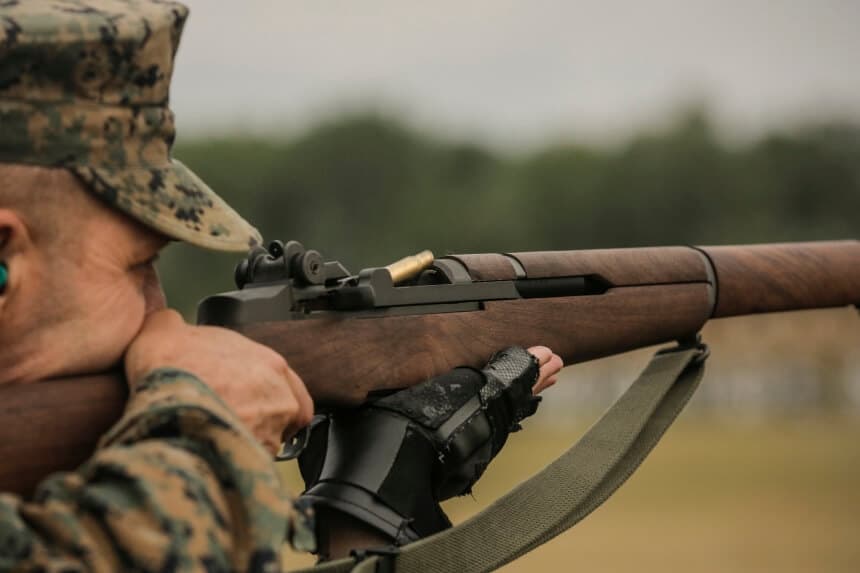
The target hole sight principle is to use the human eye to naturally place the front sight in the center of the target hole to aim. Such sights are commonly used in training and military guns, such as M1 Garland rifles, Enfield rifles, and M16 guns. Target holes are quite effective when there is insufficient light, and some hunters like to use this sight when they need heavy cover.
The head’s attachment should be uniform from time to time – this way, the aiming will be more uniform and therefore correct. The attachment should be carried out at the required distance from the rear sight and at such a height that will allow the shooter’s aiming eye to be on the aiming line of the gun (the line passing from the shooter’s eye through the slot of his sight (rear sight) and the top of the front sight to the aiming point on the target). I will not describe how to determine which eye to aim with: you have probably already heard about the method of determining the directing (dominant) eye more than once. With the head’s correct attachment, the shooter should see the rear sight’s sight, aimed at the target’s right place. The most crucial thing in this is to control the front sight’s correct position in the rear sight and the front sight’s position relative to the target.
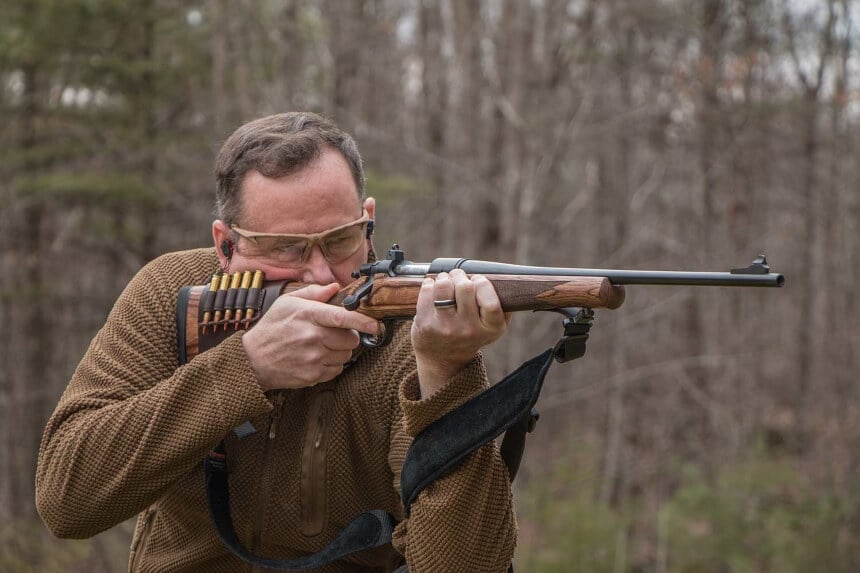
If the type of iron sight being used is the open gaze type, it is necessary to constantly monitor the position of the front sight on the target and the front sight position in the rear sight slot.
Regardless of whether you are on the shooting range or in combat, proper breathing is very important for a well-aimed shot. It is because of an untimely inhalation or exhalation that the gun can be displaced literally by a few millimeters, and as a result, you will end up not at all where you were aiming.
Why is correct breathing of paramount importance for a “well-aimed” shot? It’s simple: when you breathe in or out, your chest rises and falls while slightly displacing the gum and thereby changing the aiming point.
Also, along with breathing, the general condition of the body is quite important. For example, if you are aroused, and there is a lot of adrenaline in your blood, your heart is likely to beat faster, and your breathing will be faster. Without a doubt, if, in this case, you try to hold your breath before firing, you are guaranteed to get a slight headache and a greater chance of missing. That is why it is very important for a shooter who always wants to hit the target to be able to breathe correctly.
Pulling the trigger seems to be “so easy,” but to get good results, but a trigger pull that successfully aims and hits the target is quite a technique-sensitive action. The right hand tightly wraps around the neck of the butt, which creates appropriate support that allows the index finger to overcome the tension of the trigger spring. It is necessary to cover the neck of the butt without undue effort since considerable muscle tension can lead to an increase in the vibration of the gun.
Press the trigger either with the first phalanx of the index finger or with the first joint. In this case, the second and third phalanxes should not touch the handle.
When pressing the trigger, the index finger should move straight-back, parallel to the axis of the barrel. If the pressure occurs at an angle to the barrel bore’s axis, this can change the trigger pull and uneven movement’s magnitude. It is necessary to finish processing the descent when the gun is aimed at the aiming area.
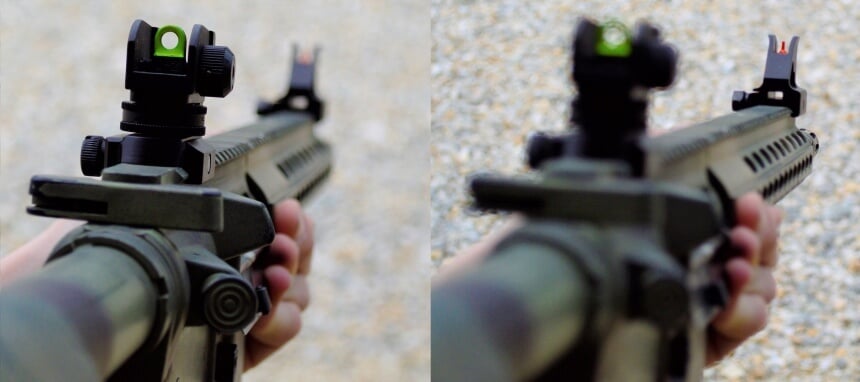
Easy to learn and use – With consistent use and practice, it becomes easier to operate iron sights than optical sights.
Low maintenance – Iron sights do not require any particular type of maintenance to keep them working. However, it is important to clean regularly to avoid dust accumulation and use antifog cream to clear its field of view.
Affordable – Iron sights are relatively cheap and affordable, and they are a part of the accessories of every gun purchase.
Indirect vision – When aiming at the target, the actual aiming is usually not directed at the target but indirectly aiming at the bullseye by aiming at the bottom edge of the target at the top of the front sight. During the aiming process, the human eye needs to be in the sight, front sight, and target. The focus is continuously adjusted between the three, and finally, a three-point line is found. It is slow to complete these physiological processes and requires a lot of intensive training to increase the shooting speed.
Poor lightening conditions – It is challenging to complete accurate shooting when the light is low or when shooting at night. The best way to deal with it is to get a night vision scope.
Poor aiming accuracy – The accuracy of the mechanical sight mainly depends on the length of the aiming baseline (the distance between the rear sight and the front sight). Generally speaking, the longer the aiming baseline, the higher the aiming accuracy, and the shortest aiming baseline of the pistol, so the aiming accuracy is not high.
Lack of magnification – The resolution of human eyesight is the resolution of the iron sight system. The general visual acuity level is one arc minute, which is 1MOA. A large number of scientific experiments have verified it. The ultimate shooting capability of guns, bullets, mechanical sights, and human eyes combined with light gun systems is the ability to hit a full-body target during the day is 200m for rifles, submachine guns, and 50m for pistols.
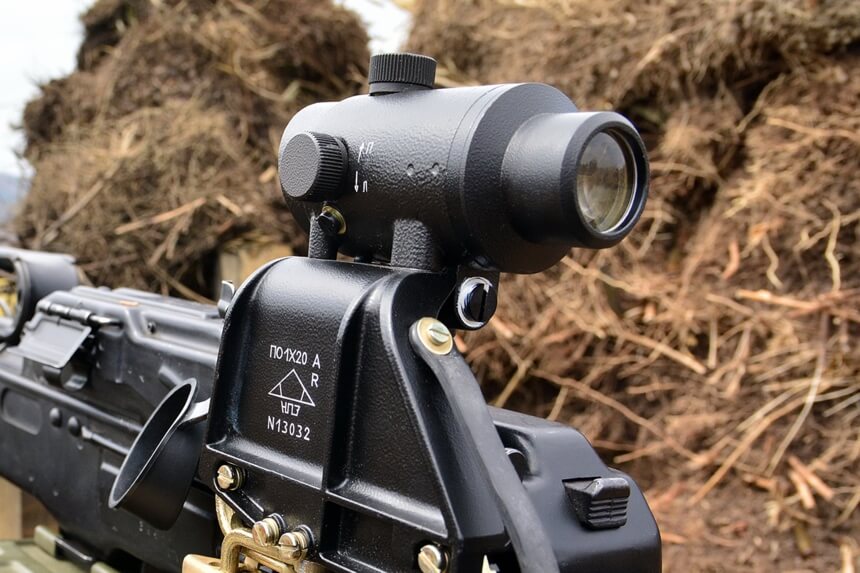
There are three critical characteristics of optical sights.
The main factor in the accuracy of a scope is its reliability or ability to withstand recoil. Different calibers of ammunition have different muzzle energy, which means they create other loads on the sight parts. For example, the .22LR cartridge is only 130 J, and the 9.3×64 cartridge is more than 5000.
The manufacturer writes the maximum value for which the product is designed but usually does not indicate the model of the gun. Usually, the energy of the cartridge is displayed on the box. The best scopes have a safety margin.
Multiplicity and strength of magnification are the ratios of the target’s size in the scope to that visible to the naked eye. For example, a wild boar three hundred meters away through sixfold optics is seen as if at fifty, but without sight.
There is no need to go after the maximum magnification. More is not always better. The higher the magnification, the smaller the angle of view. It is more difficult to find a goal, to understand what surrounds it, to assess and control the situation.
High magnification scopes are heavier and more difficult to use. Barrel vibrations are visually amplified by sight and distract the shooter. Strong optics can be seen better, but shooting requires more skill and Endurance.
These scopes are more versatile than models with fixed zoom and are good for shooting at different distances. This is especially important for driven hunting, where the animal appears suddenly, and the range of the shot is rapidly reduced. It is customary to use optics from 1 to 6 times. In the “no magnification” mode, the sight has a maximum field of view, and it works like a collimator. At the same cost, fixed focus designs are lighter, more reliable, and have better mechanical and optical quality.
We have considered how to aim iron sights, along with their types, advantages and limitations. We also discussed how optical scopes could help in long-range shooting through their unique properties. You can consider upgrading your gun with the Leupold VX-Freedom 3-9×40 that our experts highly recommend. If you love to practice long-range shooting, the Vortex Impact 6×15 is a fantastic rangefinder that gives an easy-to-use clean illuminated display and can cover up to 1,000yds. Try these products, and we are pretty sure you will thank us later.
